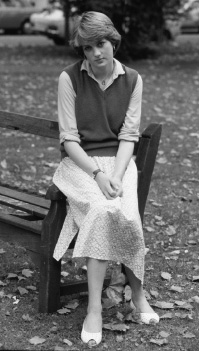Diana, Princess of Wales
Diana Frances Spencer, Princess of Wales, died on August 31st 1997, aged 36
It was easy to get caught up in the cult of Diana, which became as strong for the Princess of Wales as it was for her mythological Roman namesake. When she was married in 1981 The Economist itself gushed, “God save the next queen.” Now the cult is immeasurably greater than it was 16 years ago. Books await to be written, perhaps are already being written, about how a 19-year-old kindergarten helper became the most famous woman in the world, and was seen at her death to be an icon of her age. But whatever puzzles the writer may encounter, there will be no shortage of material to ponder over.
One of the oddities of many of the articles written about Diana during the past week is that they dwell on her search for privacy. True, she had no privacy, but she appeared content to be constantly on public view. After Lenin died the Soviet government employed researchers to make a record of every day of his life. The reporters and photographers who made Diana their career did the same, and more efficiently. She mostly smiled on their dog-like attention and occasionally threw them a bone which would turn up in a tabloid next day as a “world exclusive”.
Her friends were privy to her more intimate thoughts and these too would become public property. The princess went on television to give answers to the most searching questions about her life in a bbc programme that was sold around the world. As a product, Diana never palled. There was always some event to keep her public keen, a new lover, a new cause, some painful disclosure about her physical and mental health. Privacy is a luxury still available to the rich, albeit with difficulty. Princess Diana preferred to display her infinite variety.
Despite her humble job looking after tinies, Diana Frances Spencer was born a lady. Her father was an earl, her mother the daughter of a baron. For centuries the Spencer family had been close to the monarchy, holding whimsically named posts: a grandmother was a woman of the bedchamber. When Prince Charles was looking for a bride fit to be a queen, Diana was high on his list. Like the Roman goddess, she was apparently a virgin, a rare qualification among the prince’s girlfriends. She was pretty and, as shown in many of the pictures subsequently taken of her, she could look beautiful in a sympathetic setting. She had received little formal education, but that did not seem to matter. Her youth suggested that she could be eased without difficulty into the royal mould. The Queen Mother, who had never given the monarchy a moment’s anxiety since she married into the royal family in 1923 (and is now a hale 97), was the model, and for a while she chaperoned Diana. The princess did her duty, providing two splendid sons, one of whom is in line to be king if he and the monarchy survive. She went along with the formalities expected of a prince’s wife, becoming, for example, colonel-in-chief of the Royal Hampshire Regiment and a patron of numerous charities long cherished by the royals. But her fancy was for more offbeat causes, aids sufferers, lepers and, most recently, land-mine victims.
She gave them valuable, if brief, publicity, and her support made all the more impact by being unusual coming from a royal. She was up to date. The National Marriage Guidance Council changed its name to the snazzier Relate, with the princess as its patron. The prince also had his favoured causes, concern for the environment, the preservation of architectural standards, but a picture of Diana cuddling a handicapped child was what caught the eye. According to Diana’s accounts, she found the prince’s family boring and offhand. Although the prince was a mere 13 years older than she, Diana saw him as an old fogey, approaching middle age. Worse, Charles kept up his friendship with Camilla Parker Bowles, an old flame. “There were three of us in the marriage,” she said famously on the bbc.
The British public was slowly eased into the knowledge that what had been seen as a fairytale marriage had been deeply miserable. A separation was announced in 1992. On that television programme in 1995 Diana hinted that the prince might never become king. As for herself, she would like to be “a queen of people’s hearts”. The put-upon real queen had had enough. She told the couple to get divorced as soon as possible. Diana fought her corner and, after long and sometimes bitter negotiations partly over money, the couple were divorced in 1996. Diana remained a princess but was no longer the future queen, no longer even “her royal highness”. One of her first actions was to drop the patronage of some 100 charities.
Still, in the public eye, Diana could do nothing mean. Indeed, her seeming lapses, her adulteries, her conspicuous extravagance, seemed only to support

the view that she was a real person. The manner of her death, in a speeding car crashed by a drunken driver, with her latest lover by her side, could merely have been shocking. For millions it confirmed that Diana the goddess was a victim of “fate”, whatever that may mean.